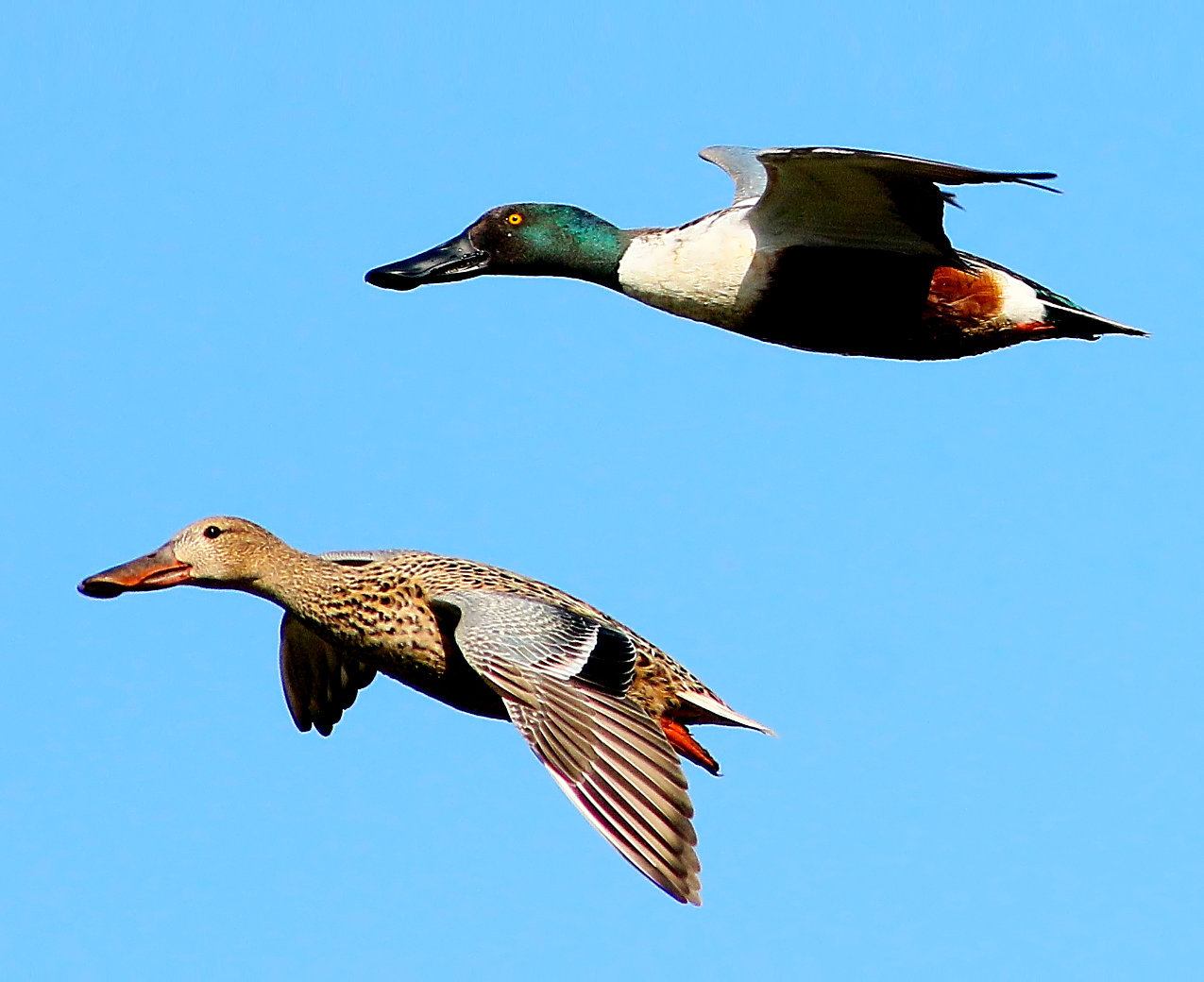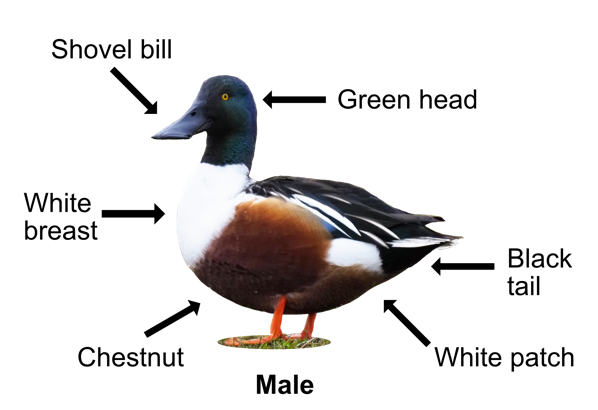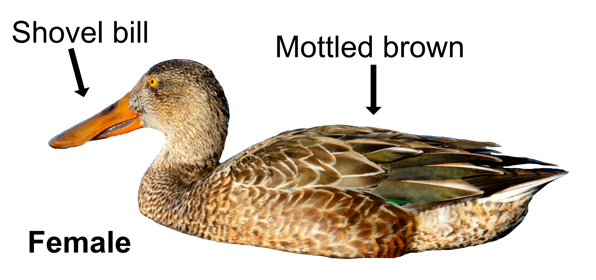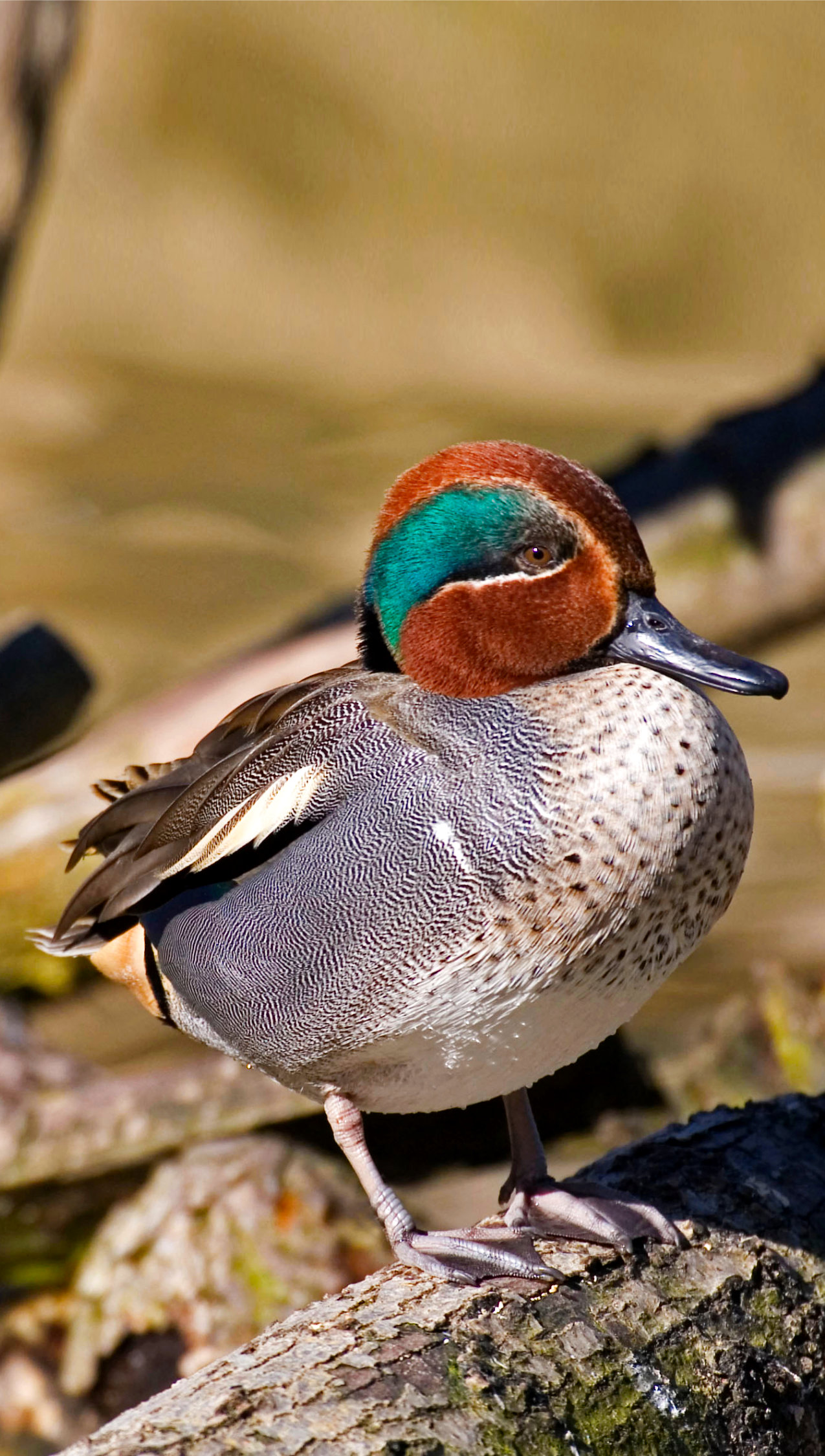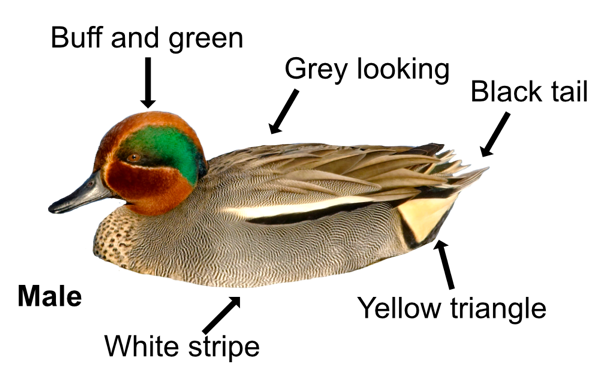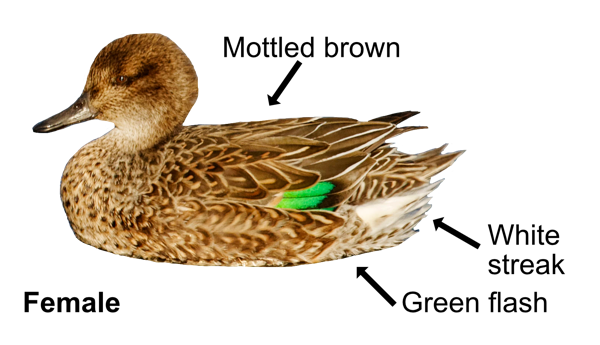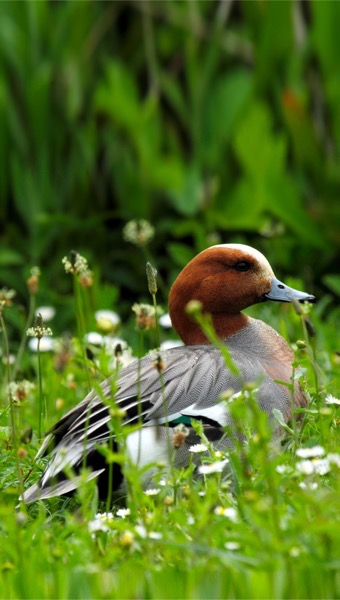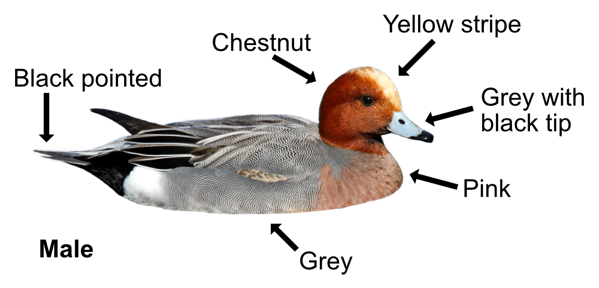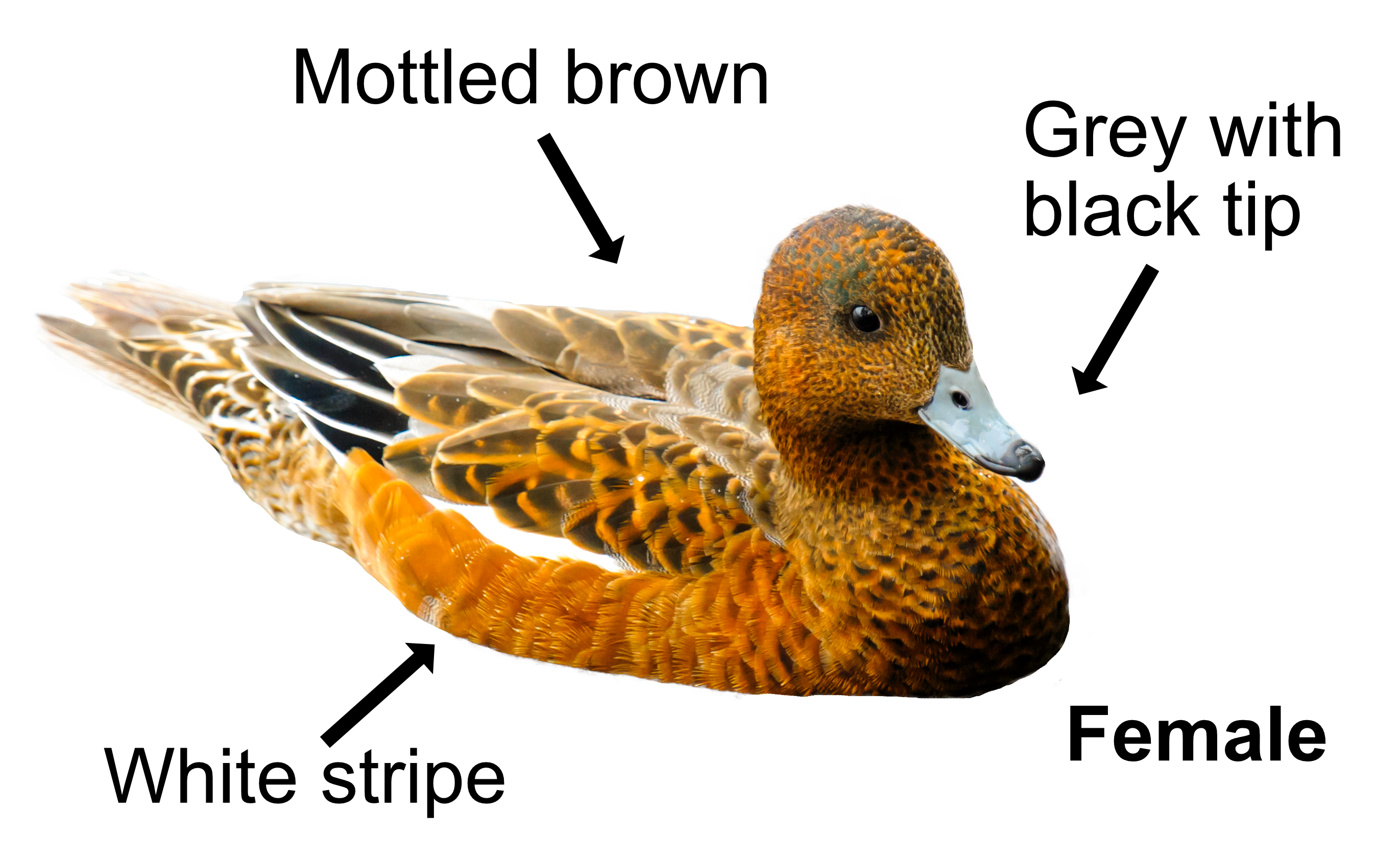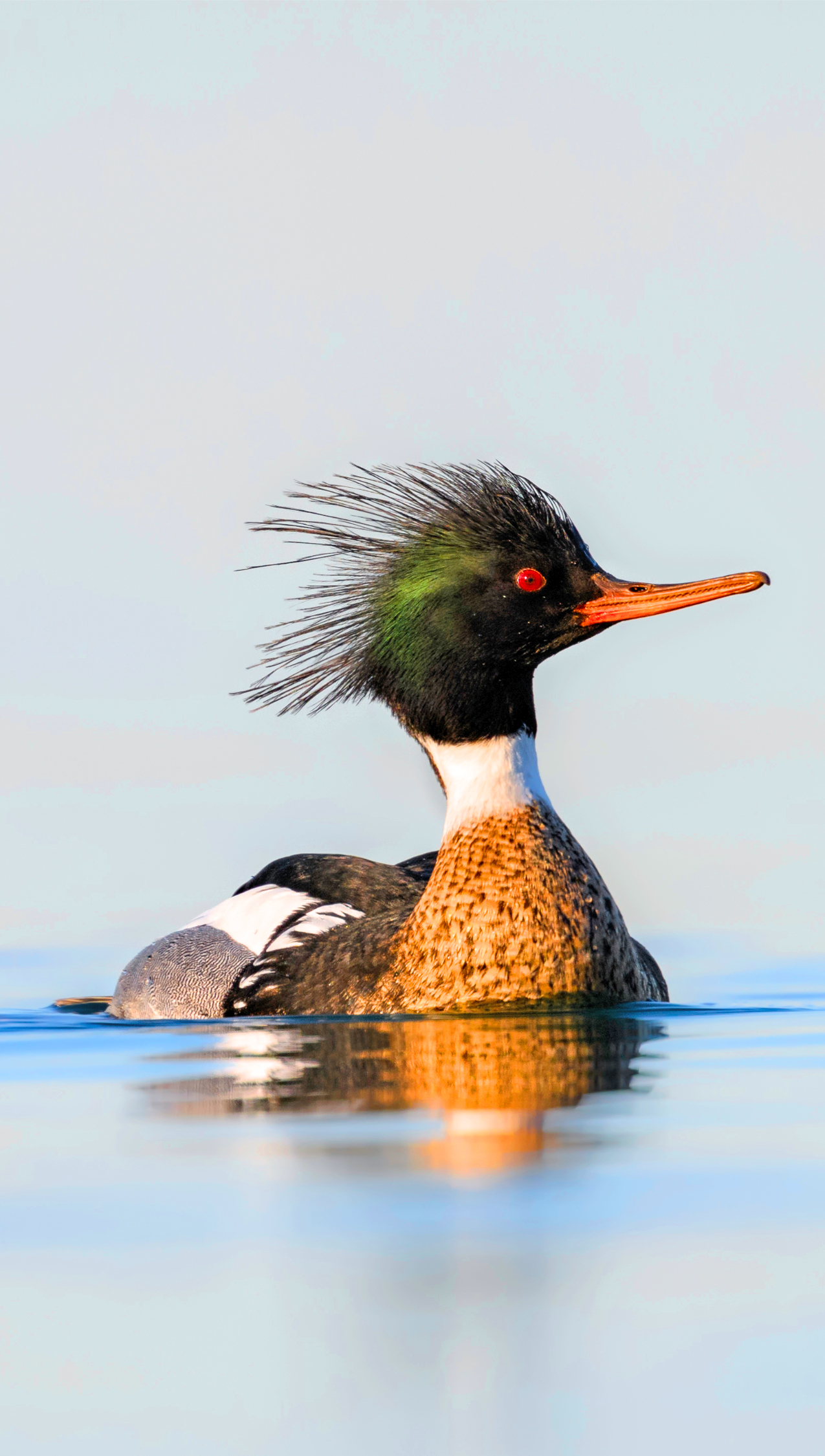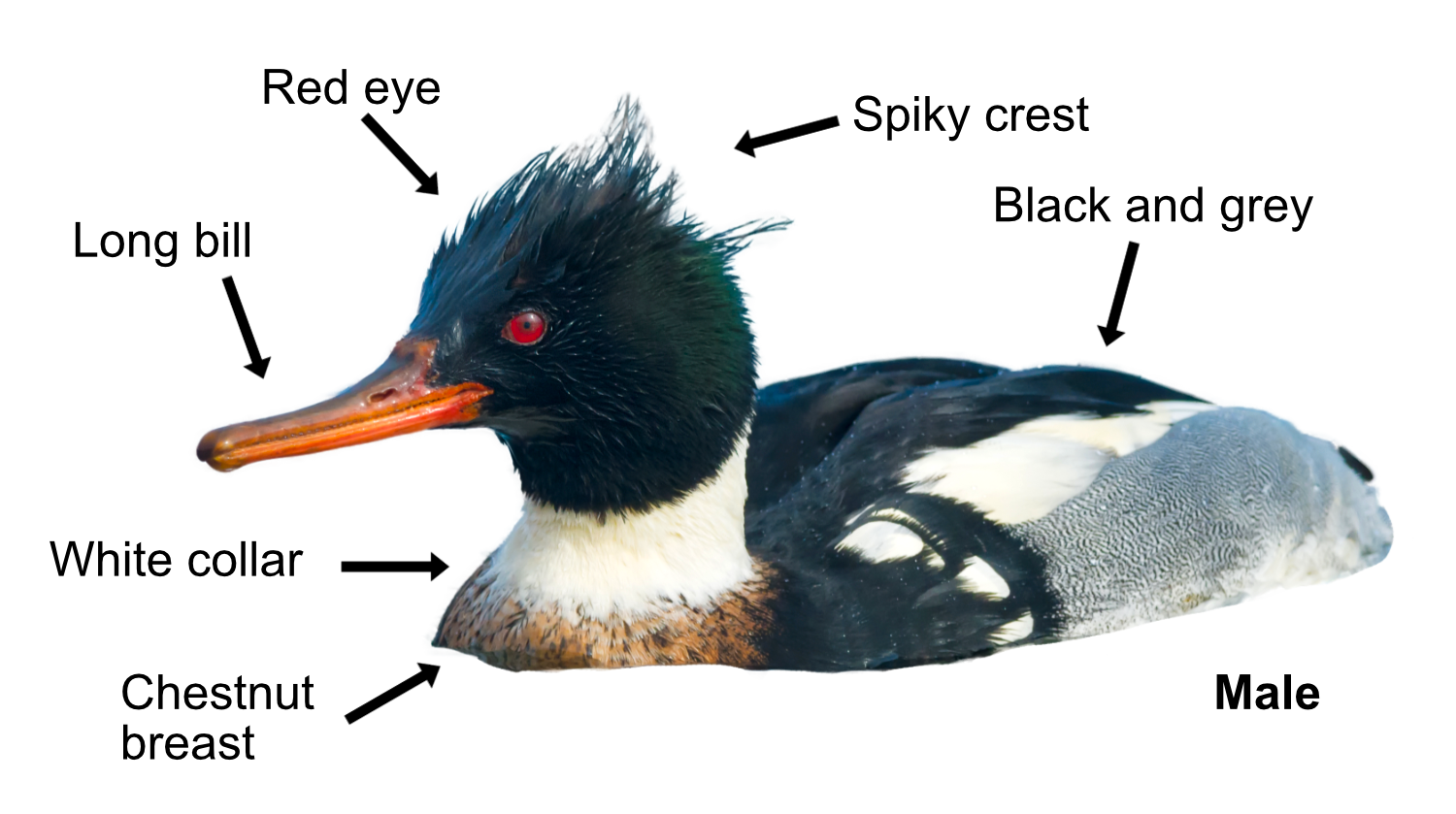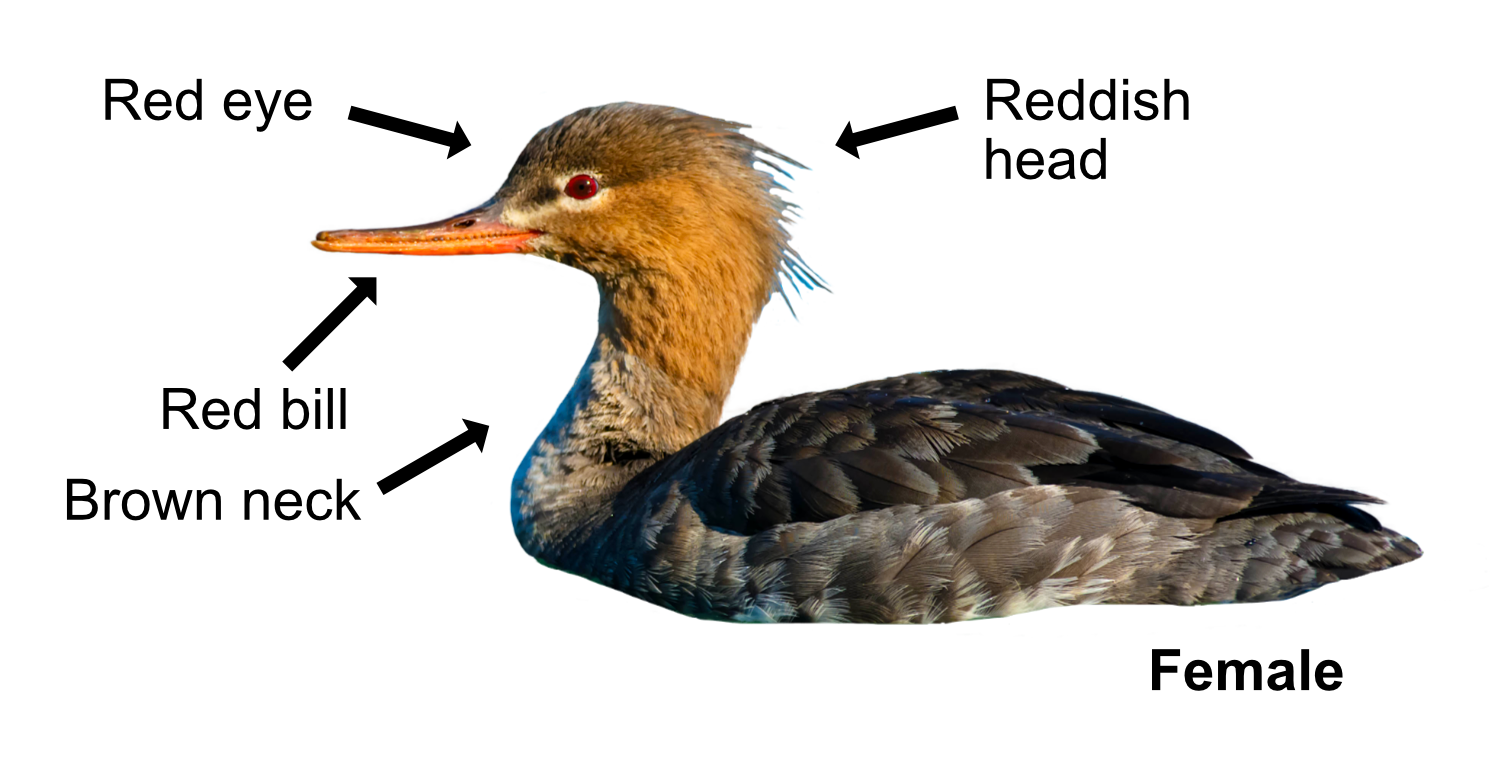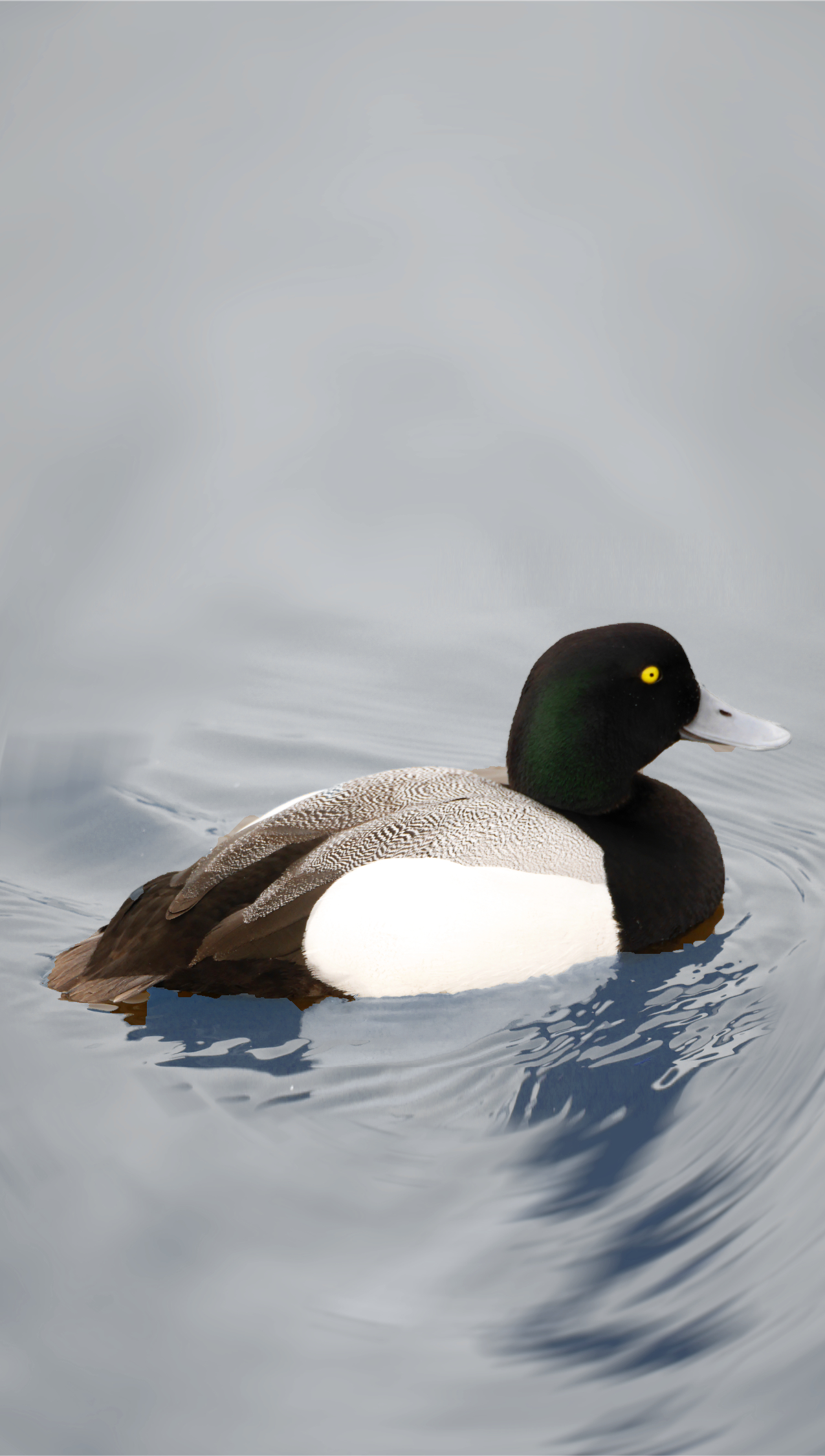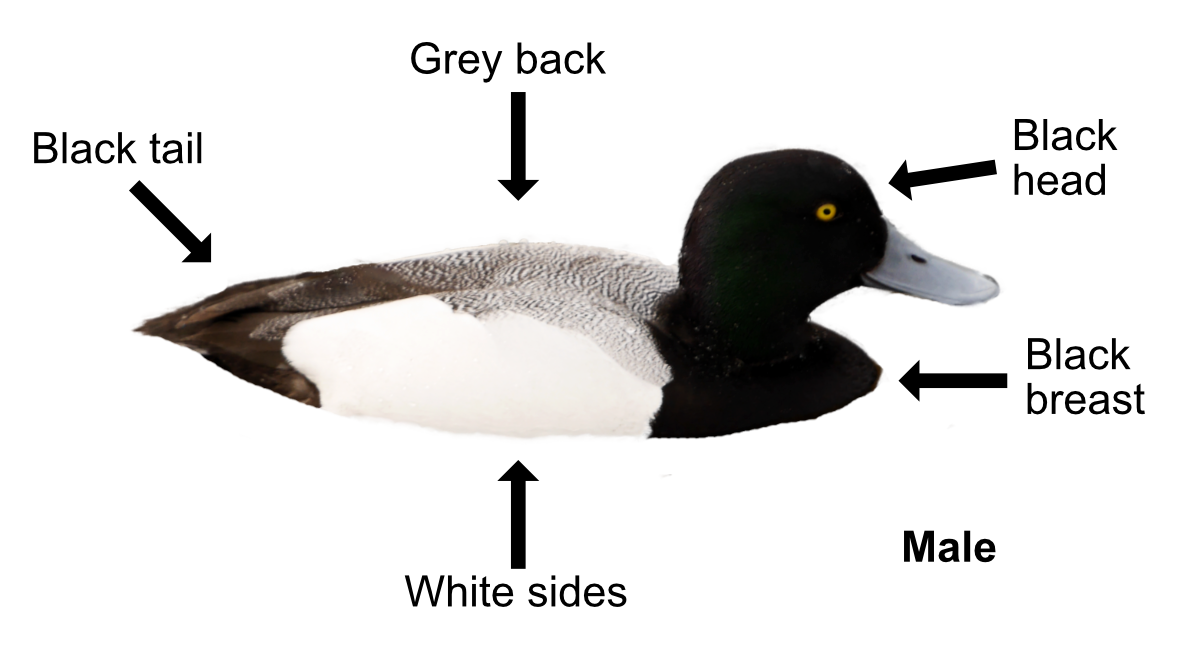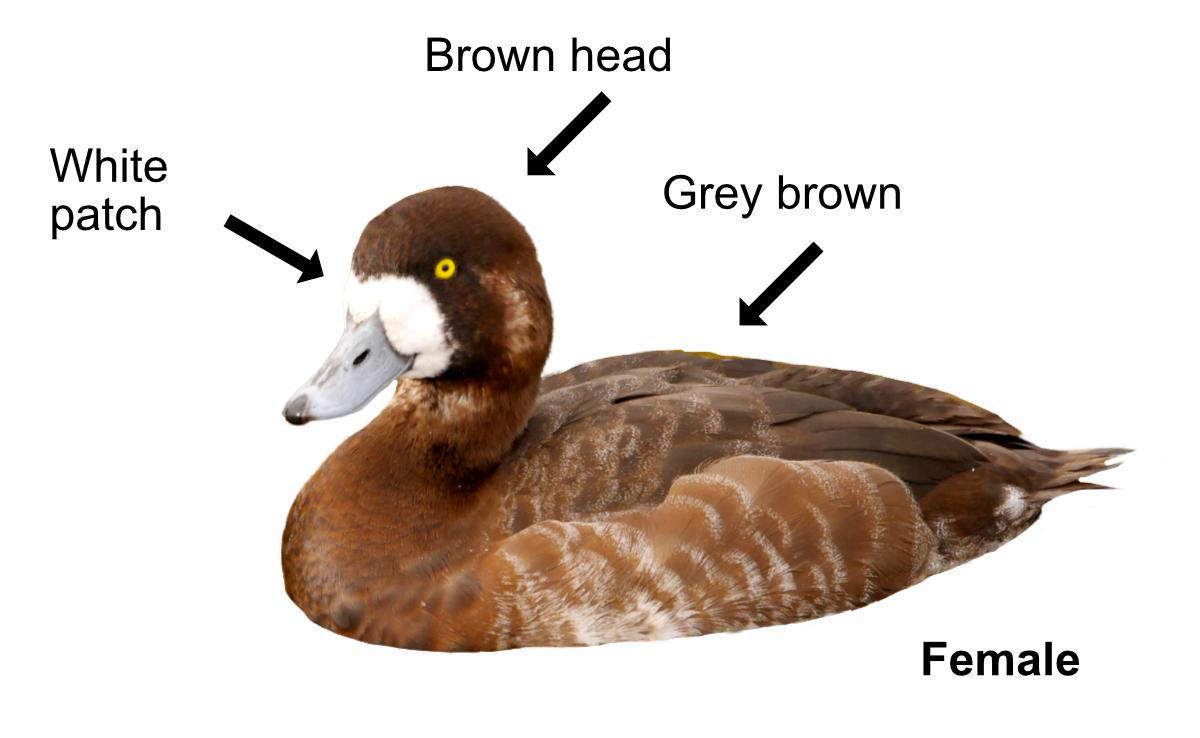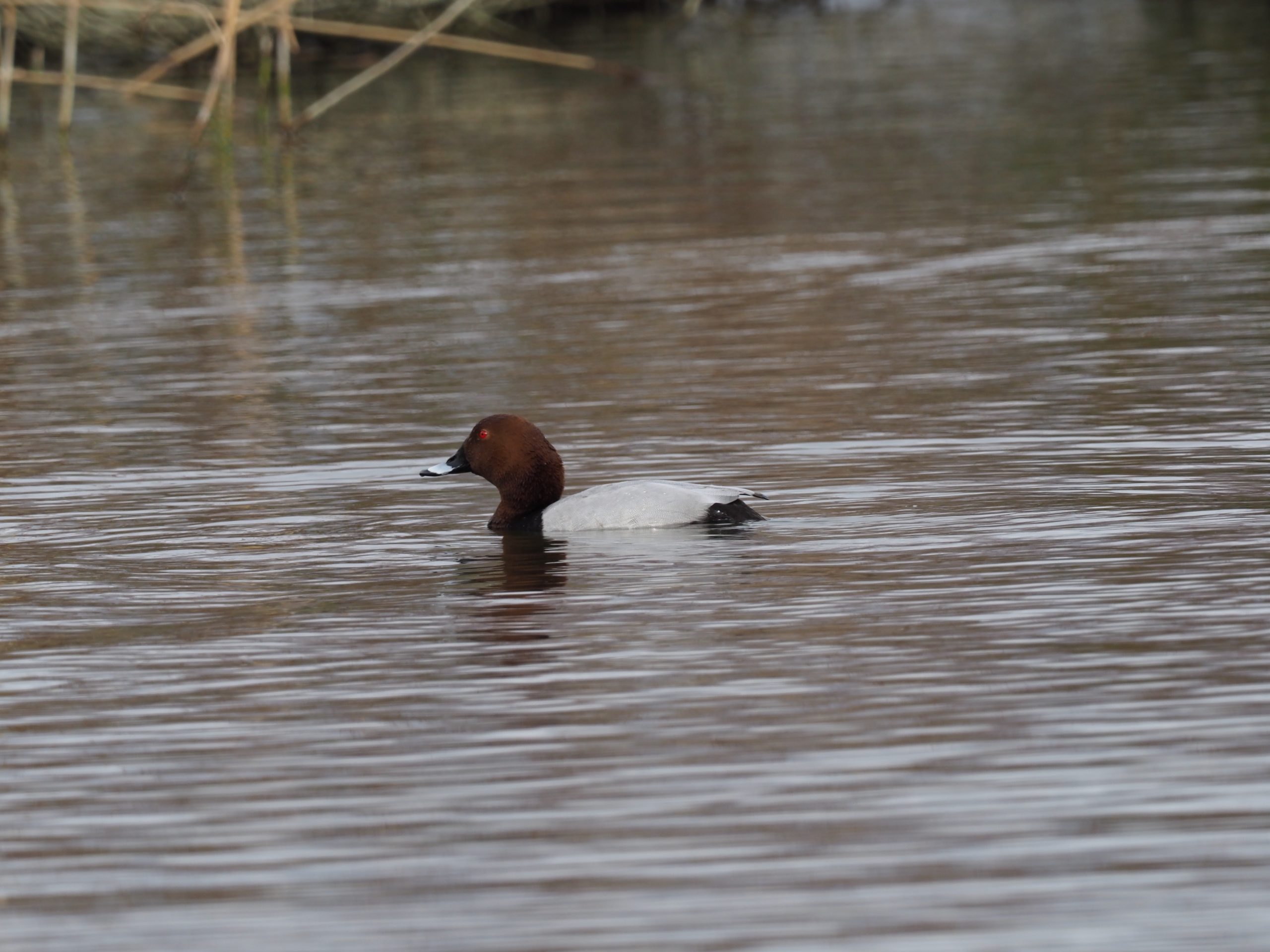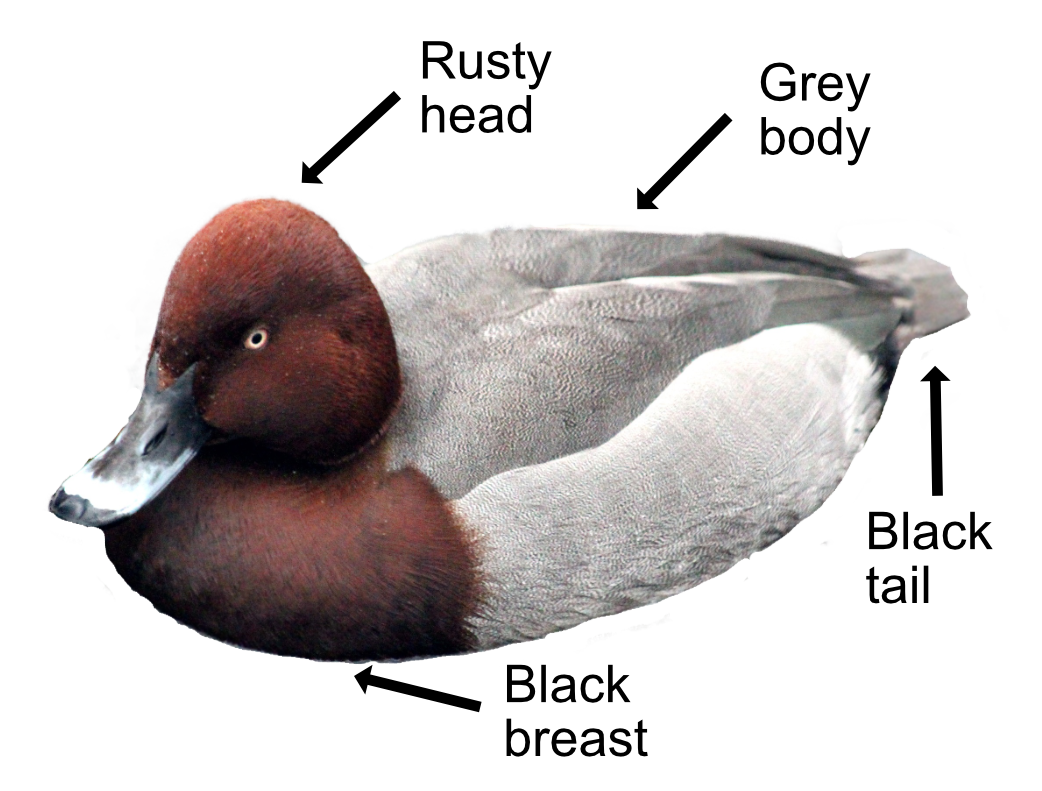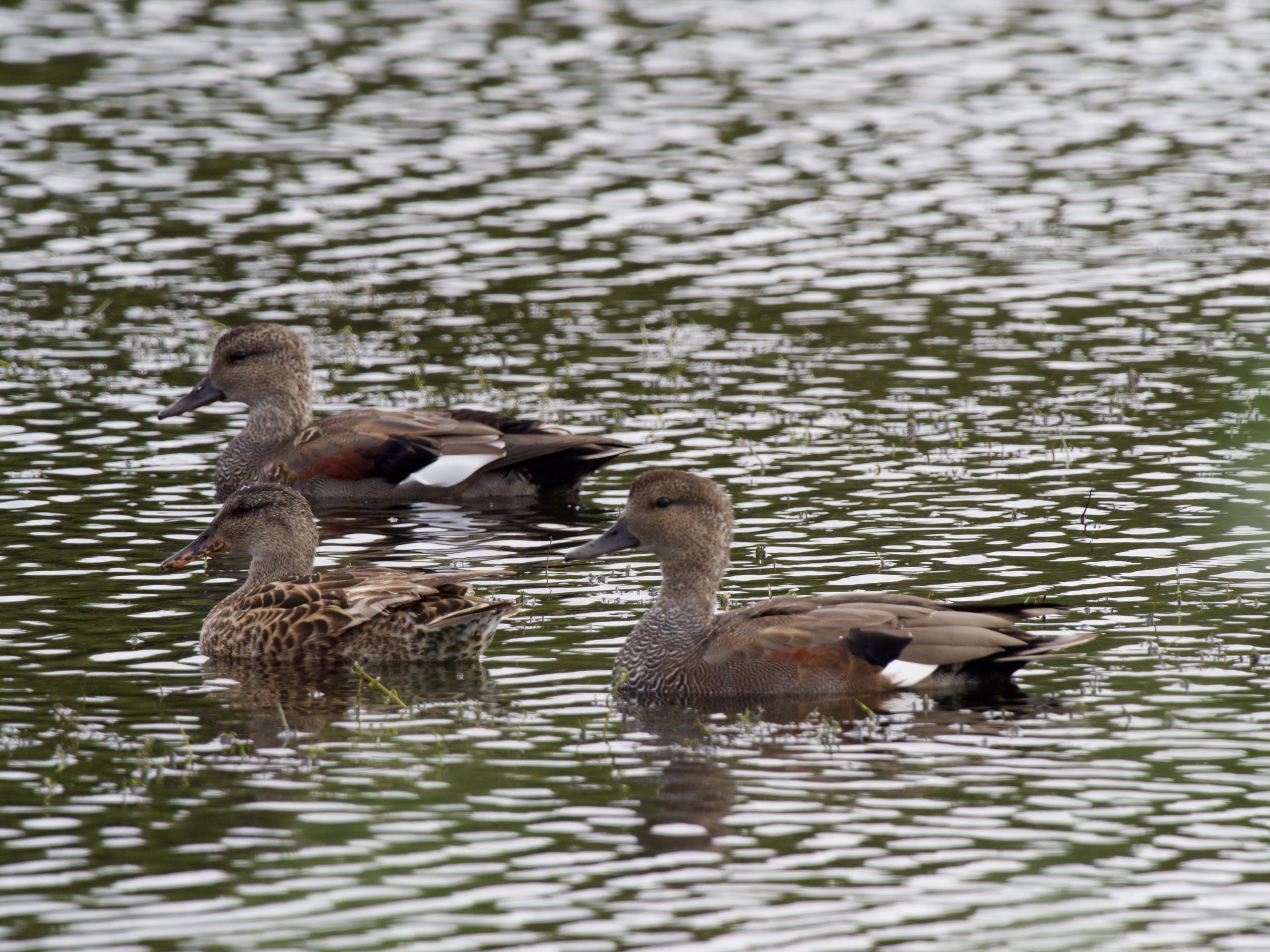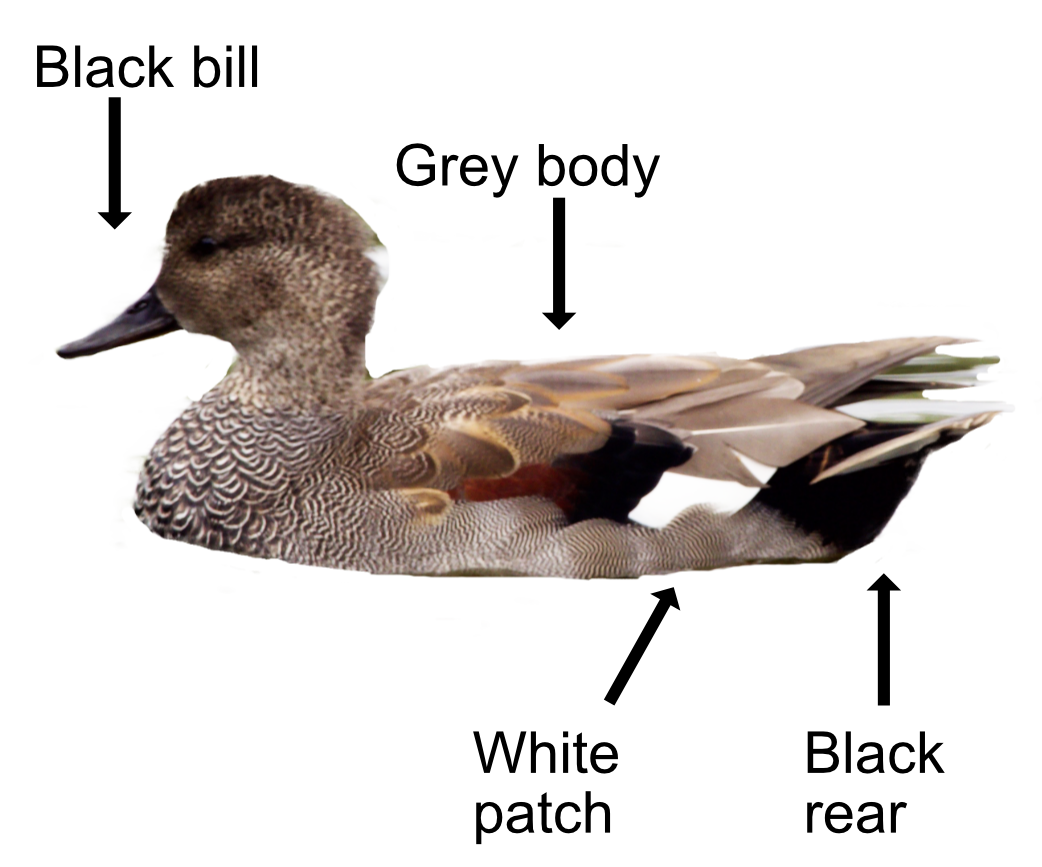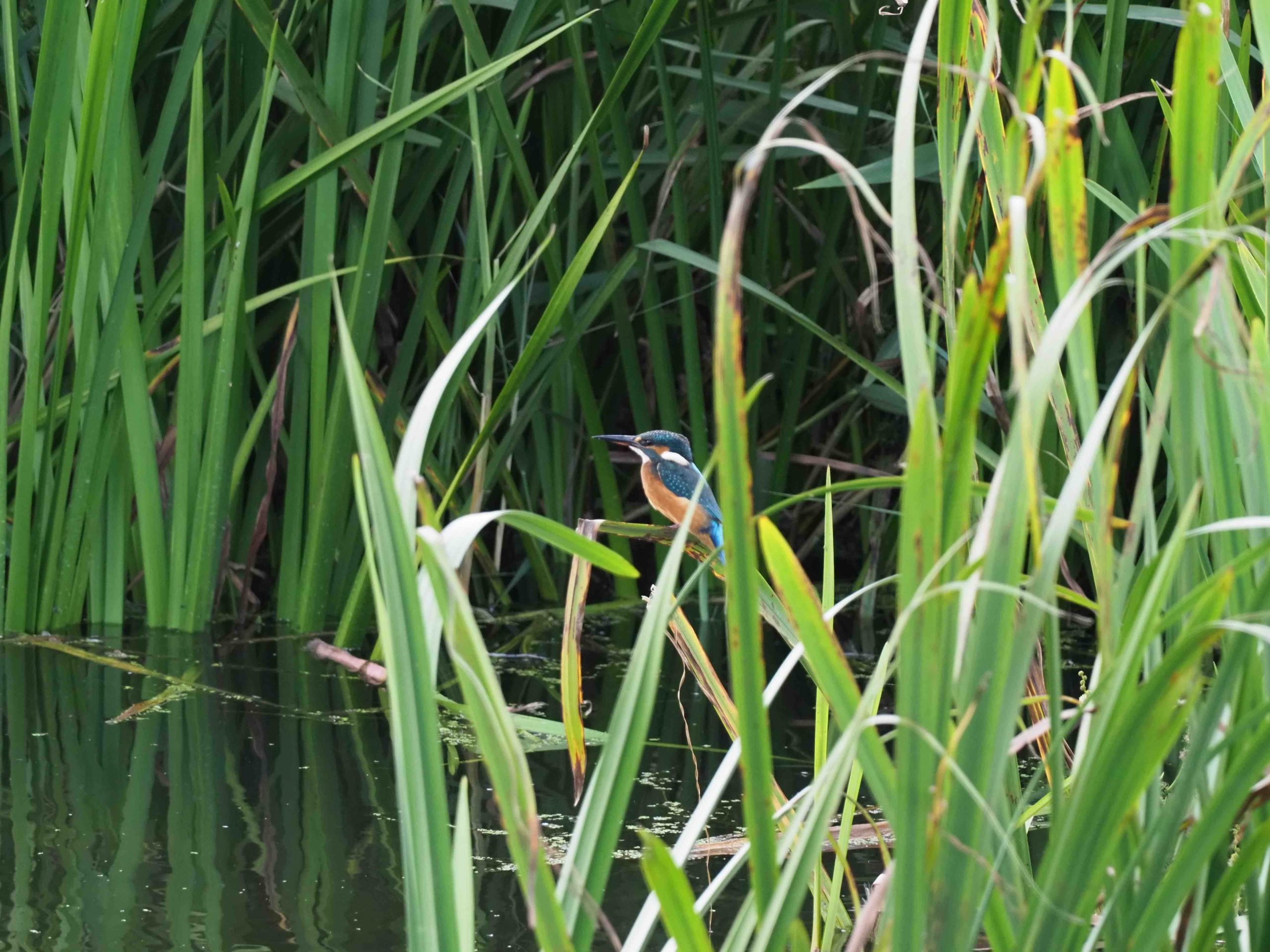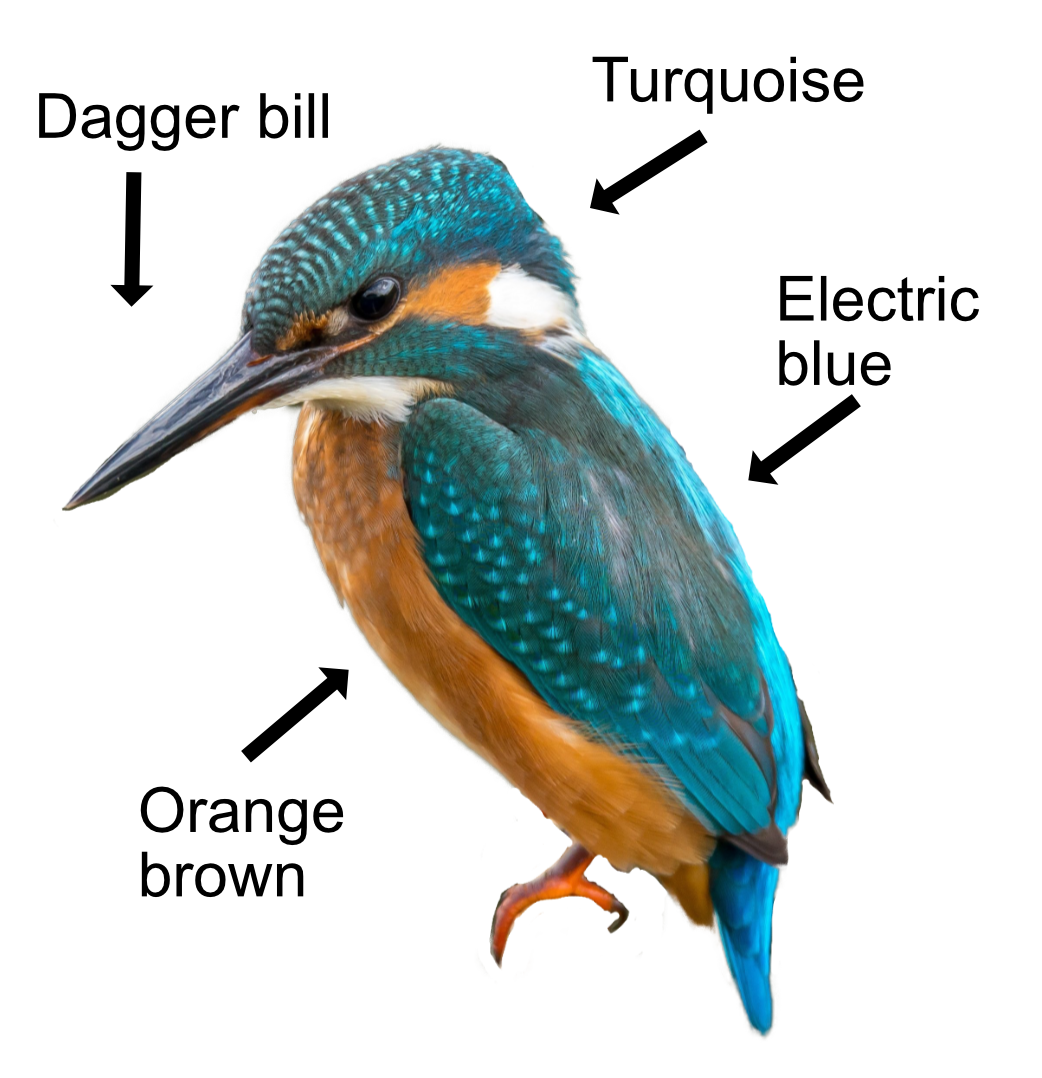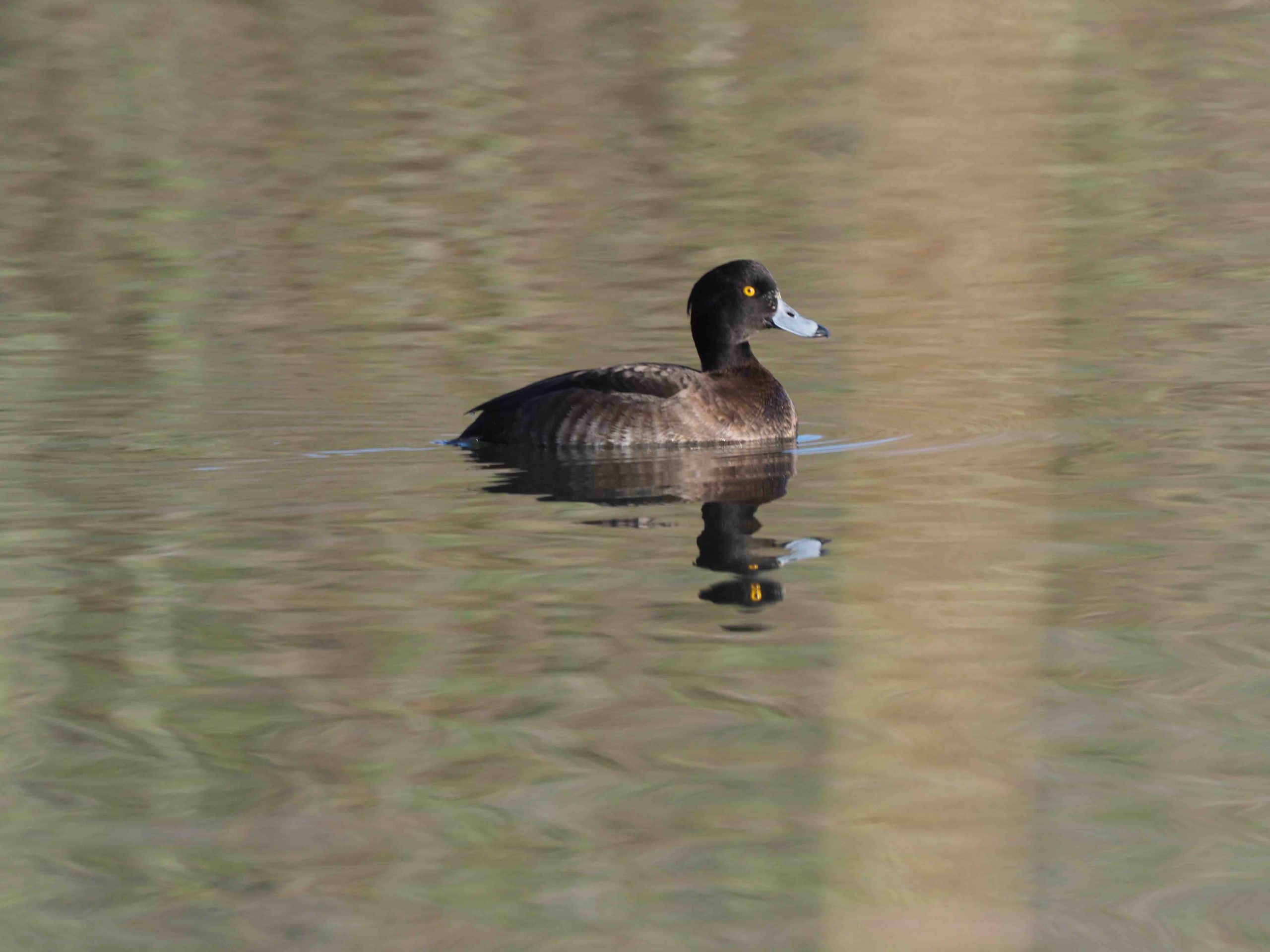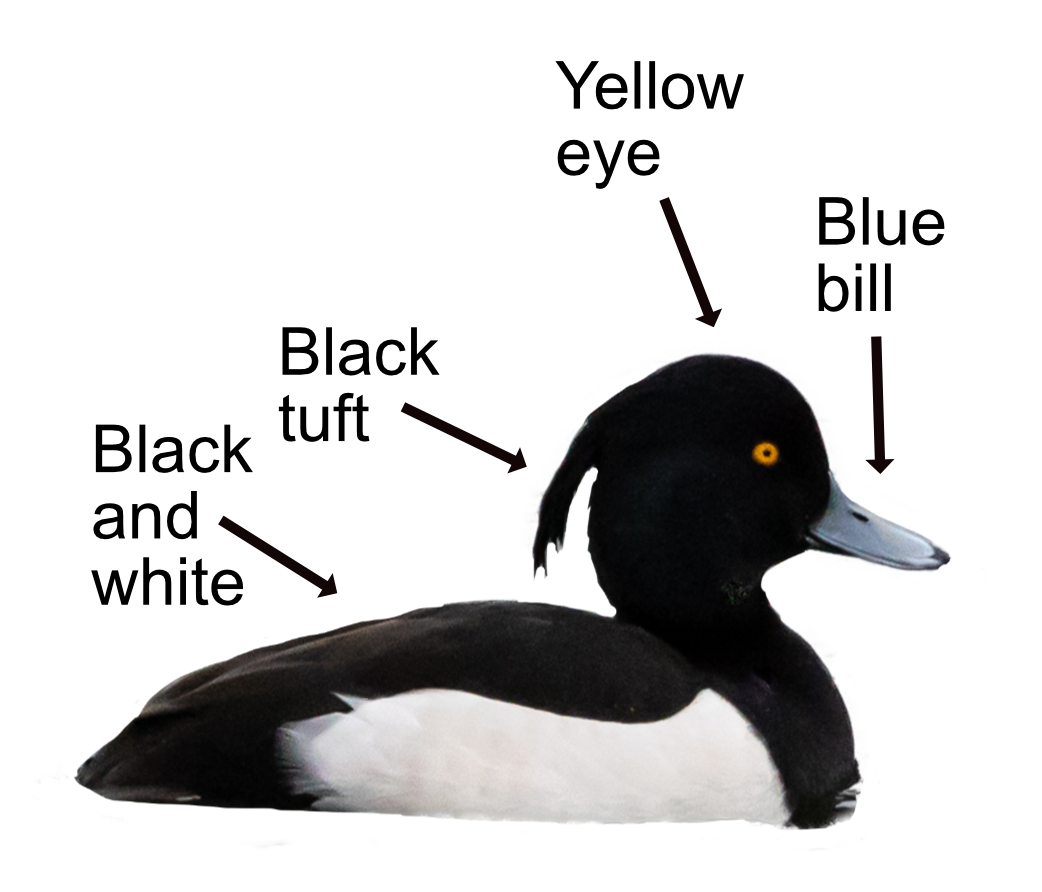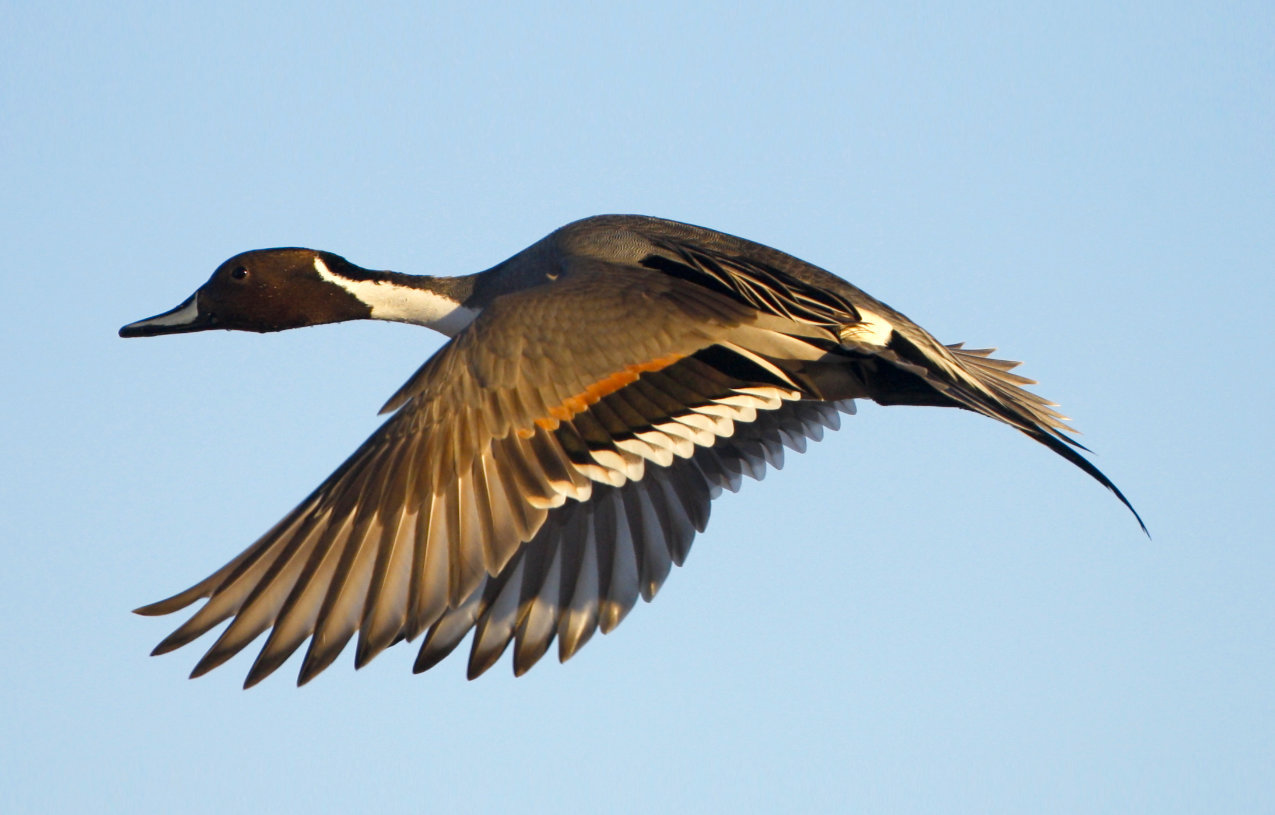
The Pintail is an elegant long-necked duck that has, as its name suggests, a pointed 'pin' tail. It is quite a shy duck of wild places and is mainly a winter visitor from Iceland. It can be seen posing on estuaries, inland wetlands and shallow reservoirs.
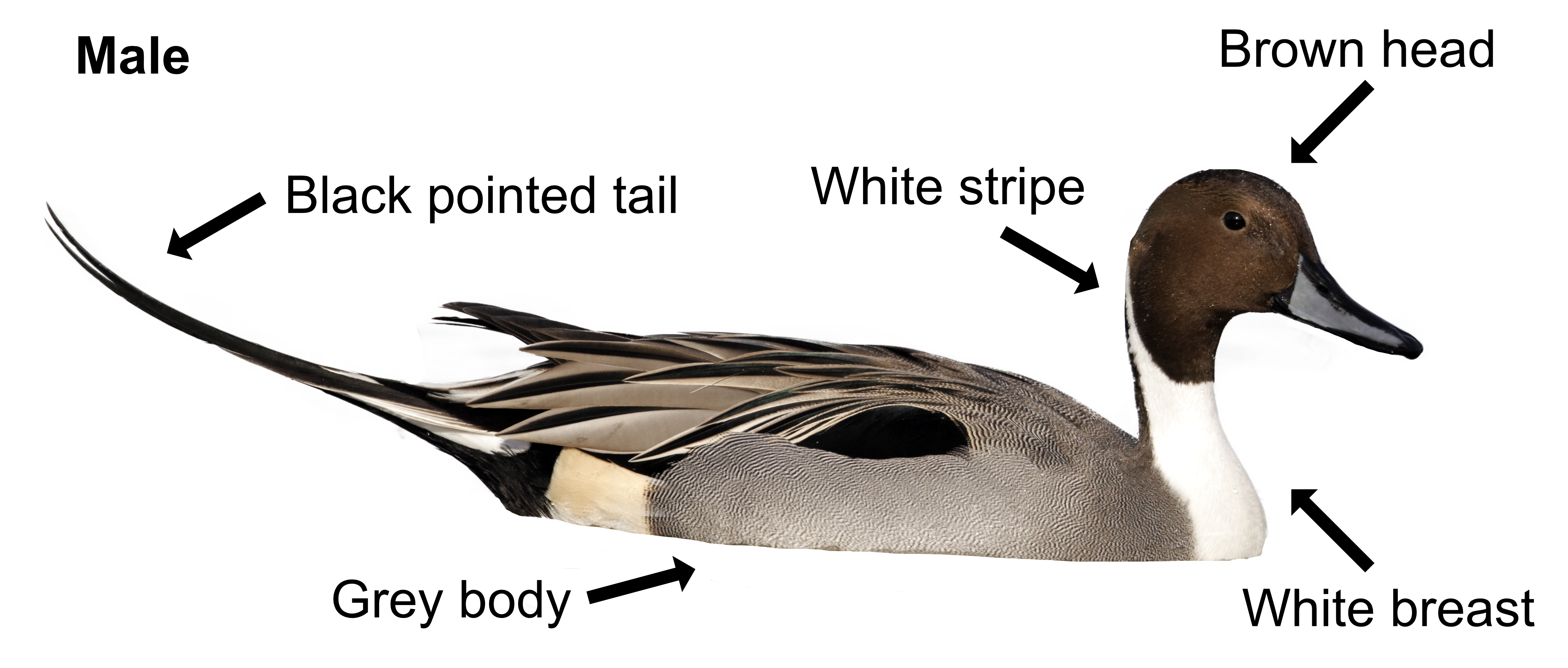
The male has a grey body, a long pointed black tail, white breast and brown head with a white stripe running down his neck. The female is a more Mallard-like mottled brown. Both their bills are grey. In flight, they show their long neck and tail with a white trailing edge to their wings. The male's call is a soft, whistling "proop-proop", similar to that of the Teal, whereas the female has a nagging "quack".
Like all dabbling ducks, Pintails feed at the surface rather than diving for their food. They eat a variety of plants when dabbling, picking from the surface or the bottom of deeper water by up-ending. Their long neck can reach food other dabbling ducks can't. During the breeding season, they will add insects and molluscs to their diet.
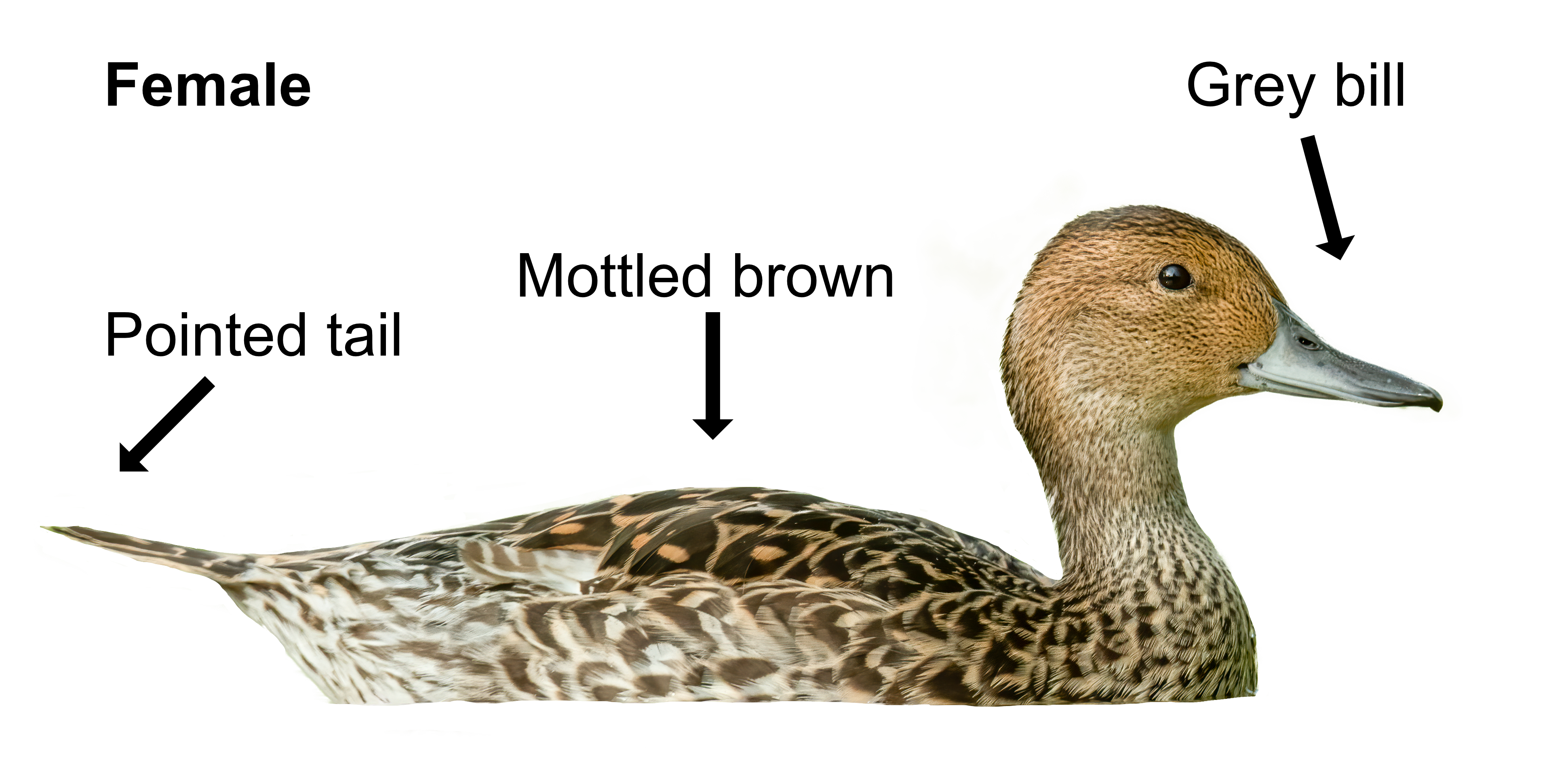
Both sexes reach sexual maturity after one year. It is rare for Pintails to breed in Britain with fewer than 30 pairs recorded in northern Scotland. The male courts the female by swimming close to her with his head lowered and tail raised, continually whistling. If there are a group of males, they will chase the female in flight until only one is left. The pair make their nest, a hollow lined with leaves, grass and down, close to open water amongst tall grass or rushes. Mum lays 7-9 eggs from April which hatch after 22 days. Soon after hatching, the young can swim and feed themselves. They can fly 40 days later. Dad leaves mum to do all the parenting and flies off to a traditional moulting area. Mum joins him once the kids have fledged. They are both flightless while they do their 4-week moult between July and September before moving south. At best, only a third of the kids will live long enough to breed themselves as the young chicks are vulnerable to predators such as foxes, crows, magpies and birds of prey.
The small breeding population and significant 30,000 overwintering population make them Amber Listed. Their preferred habitat of shallow water is naturally susceptible to problems such as drought and might be increasingly threatened by climate change. In addition, the draining of wetlands for farming has impacted their breeding areas and the sowing of spring crops means nests are often accidentally destroyed. The oldest Pintail lived to be 27, though normally they only live for about 3 years.
Their Latin name is 'anas acuta' from the Latin 'anas' meaning 'duck' and 'acuta' from the verb 'acuere' 'to sharpen' which, like the English name, refers to its pointy tail.
